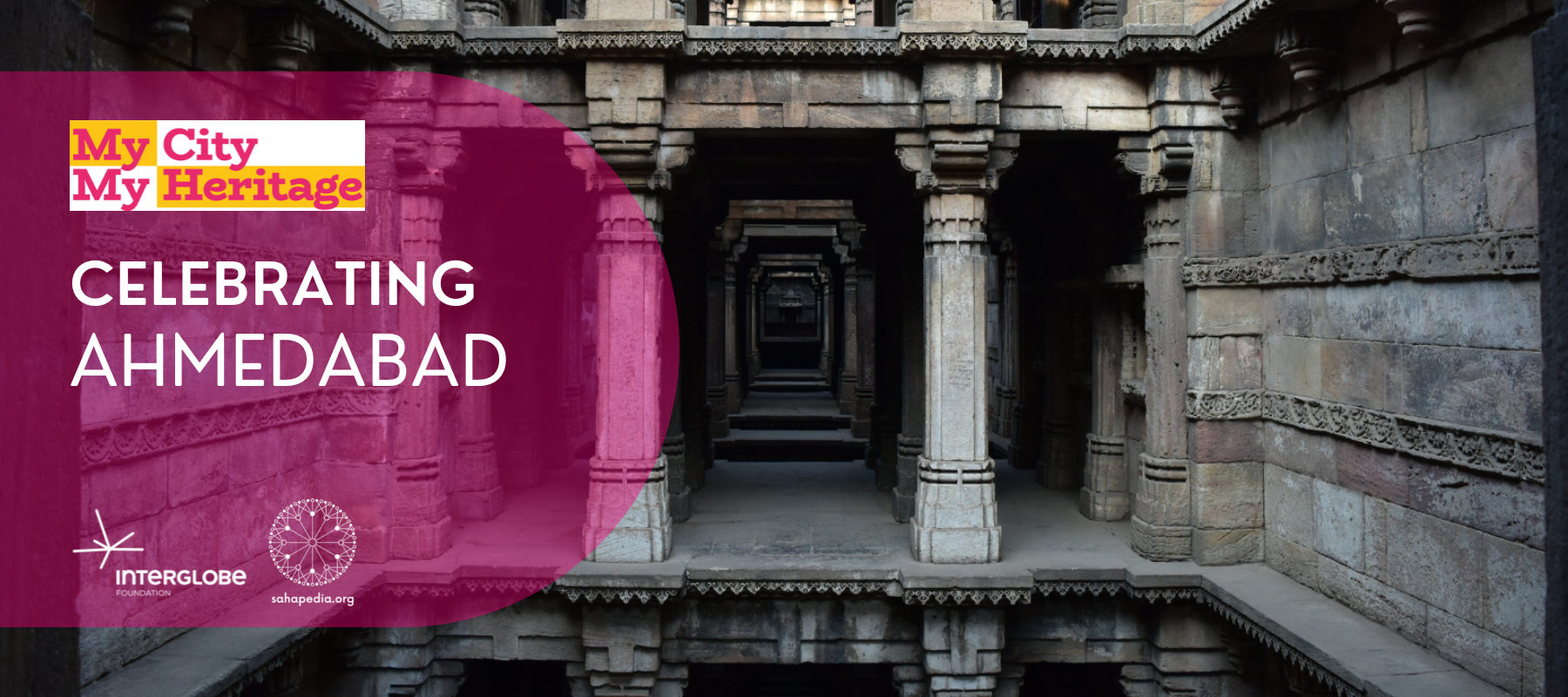Ahmedabad, the former capital of the state of Gujarat, is located on the eastern bank of the Sabarmati river and is about 23 kilometres south of the current capital of Gandhinagar. The largest city in the state at 464 km2 and the fifth most populous in India Ahmedabad is colloquially referred to as Amdavad and was recently recognised as India’s first World Heritage City by UNESCO. The city traces its roots to the eleventh century when it existed under the name of ‘Ashaval’. Described by Persian scholar Al-Biruni as a rich trading town, Ahmedabad as it is known today was founded in 1411 by Ahmad Shah I of the Gujarat Sultanate. Despite its deep-rooted history, Ahmedabad holds its own as a fast-growing metropolis in India today; antiquity meets modernity in the form of palaces and half a millenia old mosques coexisting with skyscrapers and urban neighbourhoods, while the city’s old and established commercial success is enduringly visible in its thriving textile and automobile industries. The city is presently divided into two; with the eastern side representing the old walled city, while the western side prides itself on its premier educational institutions and contemporary architecture.
The city’s present has been shaped by its heterogeneous past; Amdavadi culture is moulded by its time under Chalukya rule, followed by Delhi Sultanate, Gujarat Sultanate, Mughal, Maratha and Colonial rule. Over the years, it has amassed prestige for a variety of reasons; a case in point being its age-old textile industry, which was further revolutionised in the nineteenth century with the help of Indian capital and entrepreneurship. Today, the city is the second-largest producer of cotton in the country. A second significant aspect is its indelible connection with Mahatma Gandhi, the Father of the Nation. It was Gandhi’s experiments with satyagraha (a form of nonviolent civil resistance) in the Ahmedabad Mill strike that catapulted the city to contemporary fame; to this day, the Sabarmati Ashram stands as testimony to the Mahatma’s enduring influence on the city.
Today, Ahmedabad boasts a multicultural milieu, echoed not only by existing elements of tangible and intangible heritage, but also by a civic community which actively participates in local governance to safeguard its rights. The city’s architecture has influenced, as well as been influenced by, its various rulers and their cultures; for instance, the Delhi Sultanate’s rule impacted architectural style and helped to establish the Muslim community simultaneously, a prime example being the Sidi Saiyyed Mosque. While Islamic influences are conspicuous, they are interwoven with other distinctive elements known to Ahmedabad such as traditional housing clusters called pols. These pols are a fascinating development in urban settlement patterns, and are unique in how they are self-sufficient gated communities comprising various castes and religions. With some of the older pols dating back to almost 600 years, such as the Muhurat Pol, they perfectly illustrate the diversity in the city’s population.
The Ahmedabad Municipal Corporation lists 2,696 heritage buildings in the city; these include mosques and tomb complexes, such as the Jama Masjid and Raja-no-Hajiro, as well as intricate Hindu and Jain temples, such as the Hutheesing Temple. The city is also home to architectural curiosities, such as the Jhulta Minar or Shaking Minarets. However, modern buildings occupy a role as important as historic ones. Ahmedabad is a hub of post-Independence architecture, replete with works by notable names such as Le Corbusier, Louis Kahn and Charles Correa. Prominent Indian architect B.V. Doshi also hails from the city.
Ahmedabad’s contemporary culture includes the festival of Uttarayan, which is enthusiastically celebrated by flying kites; the city follows the time-honoured practice of manufacturing kites months before the festival, which celebrates and strengthens community via the interconnected terraces throughout the city. Amdavadi street food serves as another indicator of the city’s specialities. This reflects in areas like Manek Chowk, a unique city square in the Old City area which transforms from Vegetable Market in the day to Jewelry Market in the afternoon and a Food Market by night. Some characteristic dishes from the city include khakhra (spicy wheat crackers), fafda jalebi (sweet gram flour sticks) and samosa pav (savoury deep-fried pastry sandwiched between a bun).
Ahmedabad today is known for being a student-friendly city and is considered an important hub for higher education in the country; institutes such as NID (National Institute of Design), IIM (Indian Institute of Management) and CEPT University (Centre for Environmental Planning and Technology) feature amongst the most prestigious in India, and the city’s Gujarat University is the largest and oldest in the state. It is home to many museums, from documenting India’s textile history (Calico Museum of Textiles) to vintage cars (Auto World Vintage Car Museum). Ahmedabad is the birthplace of various eminent personalities, including politicians such as Sardar Vallabhbhai Patel and Gulzarilal Nanda, and the Padma Vibhushan awardee Dr. Vikram Sarabhai, who is popularly regarded as the Father of the Indian Space Programme.
Ahmedabad presents a remarkable amalgamation of cultural practices, all of which manifest themselves uniquely. While some are well mapped, others have more to them than meets the eye.
As a part of the My City, My Heritage launch, Ahmedabad is celebrated through a social media campaign showcasing heritage mapping done therein as a part of the project. This includes sharing interesting facts and anecdotes about the city, quizzes, competitions and a digital walk.
